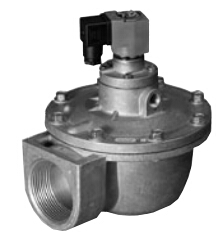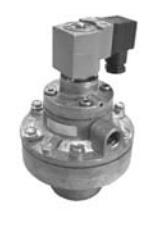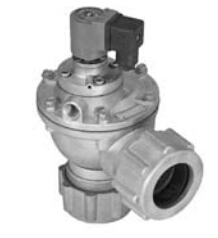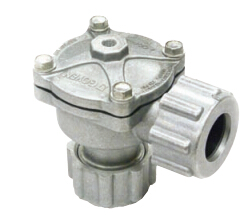Purple elemental copper is copper. Named for its color to purple. See copper for various properties. Copper is an industrial pure copper with a melting point of 1083 ° C, no isomeric transformation, a relative density of 8.9, five times that of magnesium . It is about 15% heavier than ordinary steel. It has a rose red color and is purple after forming an oxide film on the surface, so it is generally called copper. It is a copper containing a certain amount of oxygen, and is also called oxygen-containing copper. Copper is named for its purple-red color. It is not necessarily a pure copper, and sometimes a small amount of deoxidizing elements or other elements to improve the performance of the material and, therefore, included in the copper alloy. Chinese copper processing materials can be divided into: ordinary copper (T1, T2, T3, T4), oxygen-free copper (TU1, TU2 and high purity, vacuum oxygen-free copper), deoxidized copper (TUP, TUMn), adding a small amount of alloy special copper elements (arsenic copper, tellurium copper, silver and copper) four. Copper's electrical conductivity and thermal conductivity are second only to silver, and are widely used in the production of conductive and thermal conductive equipment. Copper is used in the chemical industry for its good corrosion resistance in the atmosphere, seawater and certain non-oxidizing acids (hydrochloric acid, dilute sulfuric acid), alkalis, salt solutions and various organic acids (acetic acid, citric acid). In addition, copper has good weldability and can be processed into various semi-finished products and finished products through cold and thermoplastic processing. In the 1970s, the output of copper exceeded the total output of other types of copper alloys. Trace impurities in copper have a serious effect on the electrical and thermal conductivity of copper. Among them, titanium , phosphorus , iron , silicon, etc. significantly reduce the conductivity, while cadmium , zinc, etc. have little effect. Oxygen, sulfur, selenium , tellurium and the like have little solid solubility in copper, and can form brittle compounds with copper, which have little effect on conductivity, but can reduce processing plasticity. Ordinary copper was heated hydrogen-containing reducing atmosphere or carbon monoxide, hydrogen or carbon monoxide is easy and cuprous oxide grain boundaries (Cu 2 O) effect, generating high pressure steam or carbon dioxide gas, copper can rupture. This phenomenon is often referred to as the "hydrogen disease" of copper. Oxygen is detrimental to the weldability of copper. 铋 or lead and copper form a low-melting eutectic, which makes the copper brittle; while the brittle enamel is distributed in the film boundary, which makes the copper cold and brittle. Phosphorus can significantly reduce the conductivity of copper, but it can improve the fluidity of copper and improve weldability. Appropriate amounts of lead, antimony, sulfur, etc. can improve machinability. The copper annealed sheet has a room temperature tensile strength of 22 to 25 kgf/mm 2 , an elongation of 45% to 50%, and a Brinell hardness (HB) of 35 to 45. Excellent electrical conductivity, thermal conductivity, ductility and corrosion resistance. It is mainly used for making electrical equipment such as generators, busbars, cables, switchgear, transformers, etc., and heat exchangers such as heat exchangers, pipes, and flat-plate collectors for solar heating devices. Commonly used copper alloys are divided into three categories: brass, bronze, and white copper. Pure copper is a purple-red metal, commonly known as "copper", "red copper" or "red copper." Copper is ductile. Pure copper, the size of a drop of water, can be stretched up to two kilometers of filaments, or calendered into almost transparent foil larger than the bed. The most valuable property of copper is that the electrical conductivity is very good, second only to silver in all metals. But copper is much cheaper than silver, so it has become the "protagonist" of the electrical industry. Copper is much more widely used than pure iron, and 50% of copper is electrolytically purified to pure copper every year for the electrical industry. The copper mentioned here is really very pure, and it contains more than 99.95% copper. A very small amount of impurities, especially phosphorus, arsenic, aluminum, etc., will greatly reduce the conductivity of copper. Oxygen in copper (a small amount of oxygen is easily mixed in copper smelting) has a great influence on electrical conductivity, and copper used in the electrical industry generally must be oxygen-free copper. In addition, impurities such as lead, antimony and bismuth can cause the crystallization of copper not to be combined, resulting in hot brittleness, which also affects the processing of pure copper. This pure copper of high purity is generally purified by electrolysis: impure copper (ie, crude copper) is used as the anode, pure copper is used as the cathode, and copper sulfate solution is used as the electrolyte. When the current passes, the impure copper on the anode gradually melts, and the pure copper gradually precipitates on the cathode. The copper thus obtained is purified to a purity of 99.99%. Copper is a relatively pure copper. It is generally considered to be pure copper. It has good electrical conductivity and plasticity, but its strength and hardness are poor.
Pulse Jet Valve with parts of Solenoid Coil, Solenoid Armature, aluminum valve body, and diaphragm, is suitable for dust collector applications, in particular for reverse pulse jet filter cleaning and its variations, including bag filters, cartridge filters and envelop filters, ceramic filters and sintered metal fiber filters.
Our pulse jet valve with high performance diaphragm, and construction with material as bellow:
Nuts: Diecast aluminum
Ferrule: 305 SS
Armature: 430FR SS
Diaphragm and seals: Nitrile or Viton
Spring: 304 SS
Screws: 302 or 304 SS
All size is available, pls contact us.
Pulse Jet Valve Pulse Valve, Pulse Jet Valve, Dust Collector Valve, Pulse Solenoid Valve, Pulse Diaphragm Valve,Pulse Valve Repair Kits NINGBO BRANDO HARDWARE CO.,LTD , https://www.brandopneumatic.com



In addition to pulse jet valve,we also sale angle valve,valve diaphragm,Pulse Valve Repair Kits.